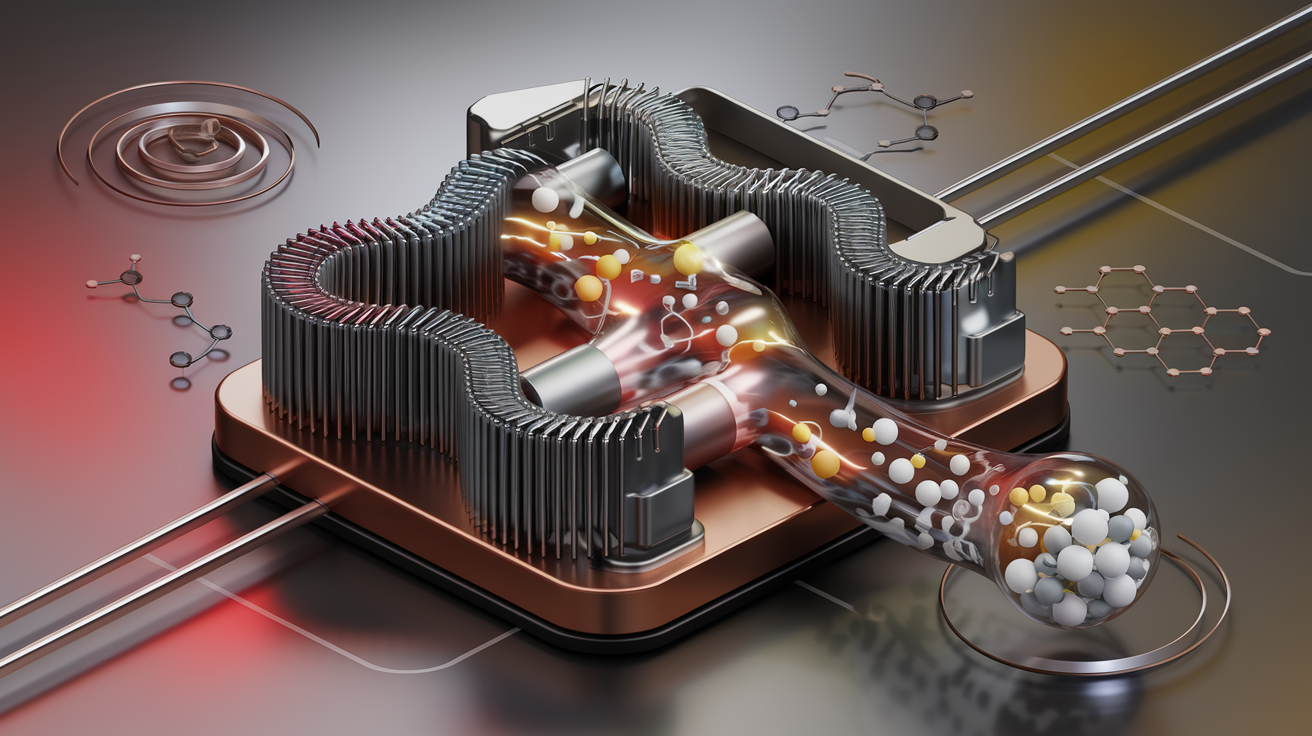Dika F, Dagbasi M, Adedeji M, Adun H. Performance Analysis of a Wavy Fin-and-Tube Automobile Radiator Operating on Ethylene Glycol and Water Based Ternary Nanofluids. Heliyon. Heliyon 11 (2025) e41509.
This study evaluates the thermal performance of a wavy fin-and-tube automobile radiator using ternary nanofluids (TNFs) as coolants. Conducted by researchers from Near East University and Cyprus International University, the study investigates how the composition and volume fraction of TNFs, in different ethylene glycol-water (EG/W) base fluid mixtures, impact radiator performance under simulated idle, city, and highway driving conditions.
The TNFs tested were composed of various nanoparticle shapes—spherical, cylindrical, and platelet—selected for their unique thermal properties. Results indicated that TNF 1, containing uniformly spherical nanoparticles (ZnO-Al2O3-SiO2), provided the best overall thermal performance, maintaining high heat transfer rates and low viscosity across all driving conditions. In contrast, TNFs with dissimilar-shaped nanoparticles exhibited reduced efficiency, especially at higher volume fractions. The EG/W (20:80) mixture outperformed the EG/W (50:50) base fluid in terms of stability and efficiency across varying conditions.

Key findings include TNF 1’s ability to optimize heat transfer while minimizing pressure drops, making it a promising solution for automotive cooling systems. The research underscores the potential of TNFs to enhance fuel efficiency and reduce environmental impacts, aligning with global sustainability goals.
Collaboration played a critical role in this multicenter study, combining expertise from multiple institutions. Researchers invite further partnerships to expand the practical applications of nanofluids in automotive and industrial cooling systems. For inquiries, please contact [email protected]
Abstract
Efficient thermal management is crucial for optimizing the performance and longevity of automotive engines, particularly as environmental regulations become more stringent and consumer demand for fuel efficiency increases. This paper investigates the energy and exergy performance of a wavy fin-and-tube radiator employing novel ternary nanofluids (TNFs) for enhanced automotive cooling. A theoretical comparative analysis was performed on four distinct ethylene glycol-water solution-based TNF configurations. TNF 1 (ZnO-Al2O3-SiO2) is made up of all spherical-shaped nanoparticles; TNF 2 (Al2O3-TiO2-MWCNT) is made up of both spherical and cylindrical nanoparticles; TNF 3 (Fe-TiO2-Graphene) comprises spherical and platelet nanoparticles; and TNF 4 (Al2O3-MWCNT-Graphene) has dissimilar-shaped nanoparticles. The radiator’s performance is assessed under simulated idle, city, and highway driving conditions to evaluate its operation in various automotive cooling demands. The results showed that, for most of the radiator operating scenarios and base fluid mixture configurations tested, TNF 1 offers the best performance. Additionally, the change in volume fraction for the EG/W (20:80) base fluid only slightly affects the heat transfer rate and exergy efficiency for TNF 1. However, increasing the volume fraction for the EG/W (50:50) base fluid TNFs has a more significant negative effect. In all radiator operation scenarios, the outlet temperature of the TNFs will decrease relative to the intake temperature. Ultimately, the research found that the TNFs would provide improved performance across all conditions, particularly in city and highway driving scenarios when there is a greater need for cooling.
